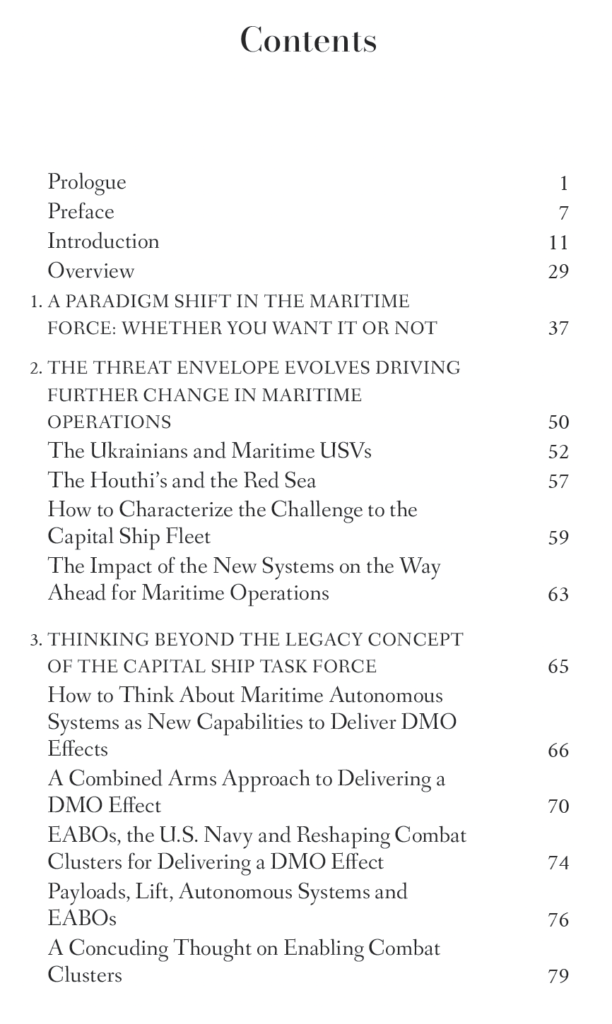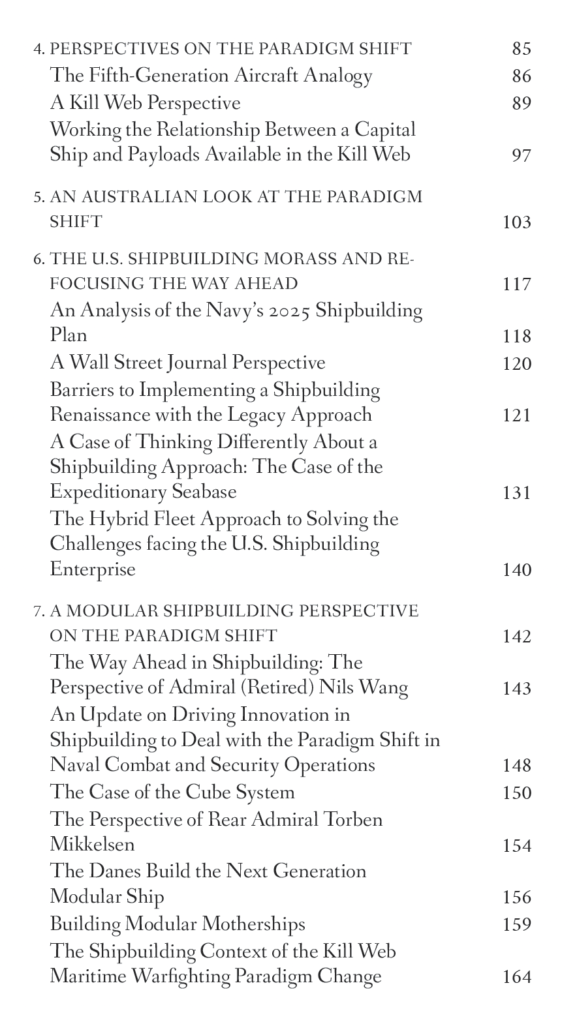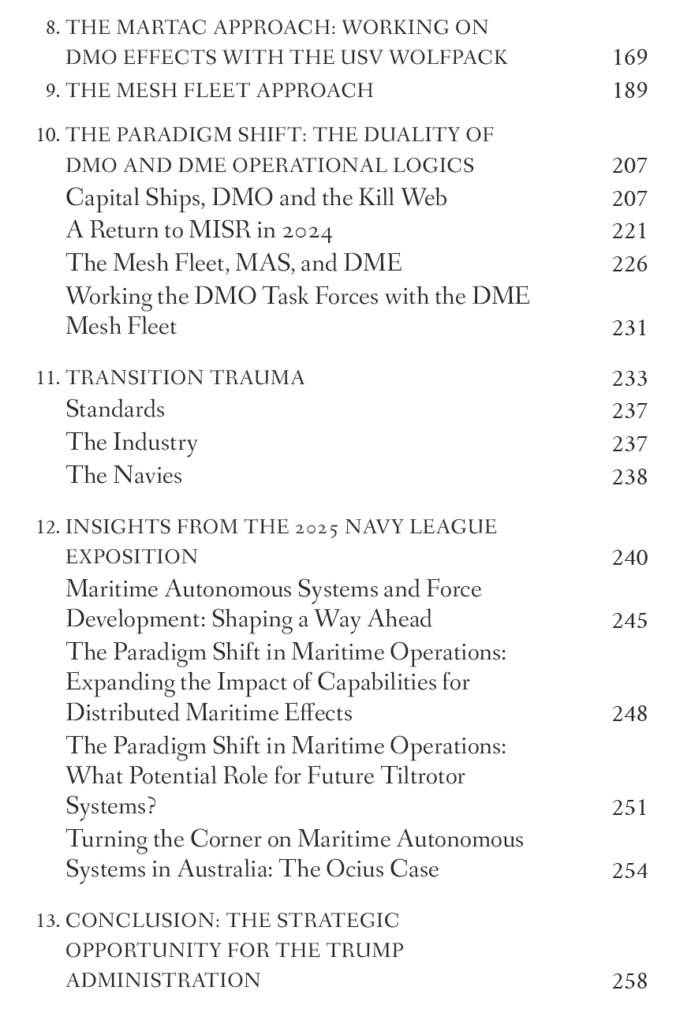
A Paradigm Shift in Maritime Operations: Autonomous Systems and Their Impact
The paradigm shift in maritime operations involves moving away from concentrating power in capital ships to distributing capabilities across a network of assets.
Distributed Maritime Effects (DME) are the effects created by this distributed force, often independent of or supplemental to traditional capital ship operations which are increasingly focused on distributed maritime operations.
The book highlights the move from traditional capital ship-centric warfare to a distributed, kill web-enabled force. It highlights the importance of integrating autonomous systems and modular capabilities for enhanced combat effectiveness.
Distributed maritime effects will increasingly be created by the use of non-capital ship maritime assets. Air and sea autonomous systems coupled with manned air will generate a core combined capability to deliver the kinds of combat clusters which can create distributed maritime effects supplemental to or independent of the operation of capital ships themselves.
The book explores the potential of maritime autonomous systems (MAS) to deliver distributed maritime operations (DMO) effects. The book also focuses on how the legacy shipbuilding approach contrasts with innovative, modular approaches for rapidly building and deploying naval forces.
The book argues for a rethinking of maritime strategy that embraces autonomous technologies, distributed forces, and innovative acquisition models.
As LtGen (Retired) Steve Rudder notes in the forward to the book:”Dr. Robbin Laird has been leading the reporting on Unmanned Systems and Kill Webs for many years and has been producing forward thinking pieces on the evolution of autonomy. At each achievement, whether it be Ukraine, TF-59 in the Arabian Gulf, or the Australian Defence Force, his articles and books have provided a window into the future dominance of autonomous maritime systems and the journey into the Kill Web.”
“From the technology standpoint, when we talk of autonomous weapons, swarming technology and the associated approvals to employ are governed by the recently updated DOD DIRECTIVE 3000.09, AUTONOMY IN WEAPON SYSTEMS. 3000.09 requirements established in the Directive include the following: “Autonomous and semi-autonomous weapon systems will be designed to allow commanders and operators to exercise appropriate levels of human judgment over the use of force.”
“Today’s industry has the technology to field unmanned capabilities today thus we should not celebrate lengthy testing and analysis. We should embrace current technology and field systems today.”
“The possibilities are endless for unmanned surface craft and the teaming with unmanned aircraft. The capability to extend the eyes and ears of the Naval fleets and patrol contested waters requires the fielding and deployment of these vessels inside the current acquisition process.”
“These capabilities are “off the shelf” and, as Robbin appropriately states, are coming WHETHER YOU WANT IT OR NOT.”



For a podcast discussing the book, see the following:
A Paradigm Shift in Maritime Operations: Autonomous Systems and Their Impact
